THE FARMLAND DEFENCE LEAGUE’S VIEW OF CHRISTMAS DINNER
Half of the turkey consumed in British Columbia each year is consumed during the Christmas season.
BC has 56 turkey producers who generated $41.9 million in turkey sales in 2007
BC is pretty self-reliant when it comes to turkey. We import less than 2% of the turkey we produce domestically.
British Columbians are the third largest turkey gobblers in Canada (behind Ontario and Quebec). We consume twice the amount of turkey that Albertans do.
Relish the Thought
12% of the cranberries being served on tables around the continent this holiday season came from BC, and more specifically from 88 cranberry farms in the Fraser Valley, where the mild climate and wet flood plain provide ideal growing conditions for BC’s top berry crop.
Although the packaging doesn’t show it, BC’s cranberry producers, like Barnston Island’s Opus Cranberries, are major suppliers to Ocean Spray Cranberries.
The Fort Wine Company in Fort Langley has shown that cranberries also make excellent wine.
Holiday Ham instead of Turkey?
BC’s 175 pork producers raise about 300,000 hogs/year. Yet between 70 -75% of the pork eaten in BC is imported.
An Eye for an Eye
Serving russets or nugget potatoes this holiday? In fact, British Columbia produces 35 different varieties of potatoes.
The largest field vegetable crop in the province, BC produces 71,000 tonnes of potatoes annually. But we import 107,753 tonnes (worth over $59.3 million) each year, mostly from the US (Washington State and Idaho).
72% of BC’s table potatoes are grown in the Fraser Valley.
While BC is a net importer of potatoes, we are a net exporter of seed potatoes. Known as “Spud Valley”, the Pemberton Valley’s rich volcanic soils enable it to produce the largest variety of seed potatoes in the world, providing potato farmers around the globe with BC seed potatoes.
Apple or Pumpkin Pie?
In 2002, just 11,000 acres of orchards in the Okanagan, Similkameen and Creston Valleys produced $72.3 million for the BC economy – and a billion apples. BC produces 30% of the apples grown in Canada.
We consume only 25% of those. The average British Columbian eats only 75-100 apples/year – far less than the apple a day recommended to keep the doctor away.
That means that BC exports about 75% of the apples we grow. Yet we import a lot, too. Our biggest competitor for our own and international markets is Washington State which, although they have similar climate and growing conditions, produces up to 20 times the amount of apples that BC does.
If your holiday pie is pumpkin instead of apple, chances are the pumpkin was grown in the USA. Although BC produces approximately 3 million pounds of pumpkins annually, most of those are the large stock used for Hallowe’en jack-o-lanterns. Canada imports the vast majority of pumpkin used for human consumption.
Vegetables
Holiday salad? Although Canada produces 78 tonnes of lettuce a year, we import 305 tonnes. Most of our imports come from the US, and predominantly California (the “1,000 mile Caesar salad”).
In 2001, 659 acres of BC farmland produced 6.1 million pounds of Brussells Sprouts, representing $2.4 million in farm gate receipts.
BC grows 50 types of vegetables and 90% of the province’s vegetables are grown in the Fraser Valley.
In 2002 BC fresh & processed field vegetable production was worth $32 million, while our imports were more than 10 times that or $332 million.
The US represents 80% of all fresh field vegetable imports and 85% of processed field vegetable imports to BC, and California alone makes up 72% of that. Global warming and domestic water consumption are causing severe water shortages in California that are expected to significantly affect agriculture.
Global food shortages in 2008 saw riots and conflict around the world. BC has experienced some increases in food prices, but not as much as Washington State, where prices rose 15%.
Although the food security crisis has not reached BC’s marketplace yet, we are vulnerable. Less than 5% of this province’s land base is suitable for agriculture.
Between 2002 and 2007, BC lost 10,200 acres of farmland from its Agricultural Land Reserve, with most of those losses from the Fraser Valley where rich alluvial soils combine with a mild climate and long growing season to provide the province’s best agricultural productivity. Of the 7.500 acres added to the ALR during this same period, most of the lands were of lowest soil ratings and were located in northern parts of British Columbia, which has colder climate and a shorter growing season.
Thousands of additional acres of farmland were lost to “non-farm uses” including roads and highways, port and airport expansions and country estates.
The Ministry of Agriculture’s British Columbia Food Self-Reliance Report (2007) indicates that BC will need 240,000 additional acres of farmland near urban centres (for irrigation) and 1 million acres of rangeland to meet the needs of our population by 2025.
Let’s make 2009 the year we draw a hard edge around the ALR. Happy holidays everyone.
Directors
Farmland Defence League of BC
Saturday, December 20, 2008
Subscribe to:
Post Comments (Atom)





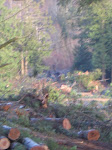

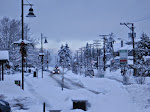
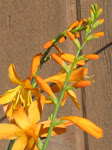
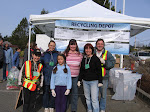
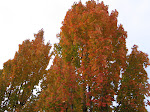
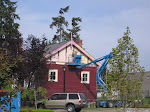








No comments:
Post a Comment